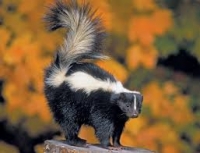The skunk’s lingering presence reminded me of a story that I heard from a Brown University cognitive psychologist on a radio program once. She was discussing the close association of smell, emotion and memory and how scientists have discovered that our first association with a scent is often the one that determines how we later interpret that smell. Then, she used the example of skunk spray. She said she LOVED the smell of skunk spray and that our first association or memory often overrules later associations with that same scent because of the close proximity of memory and smell in the brain. What?! She gave f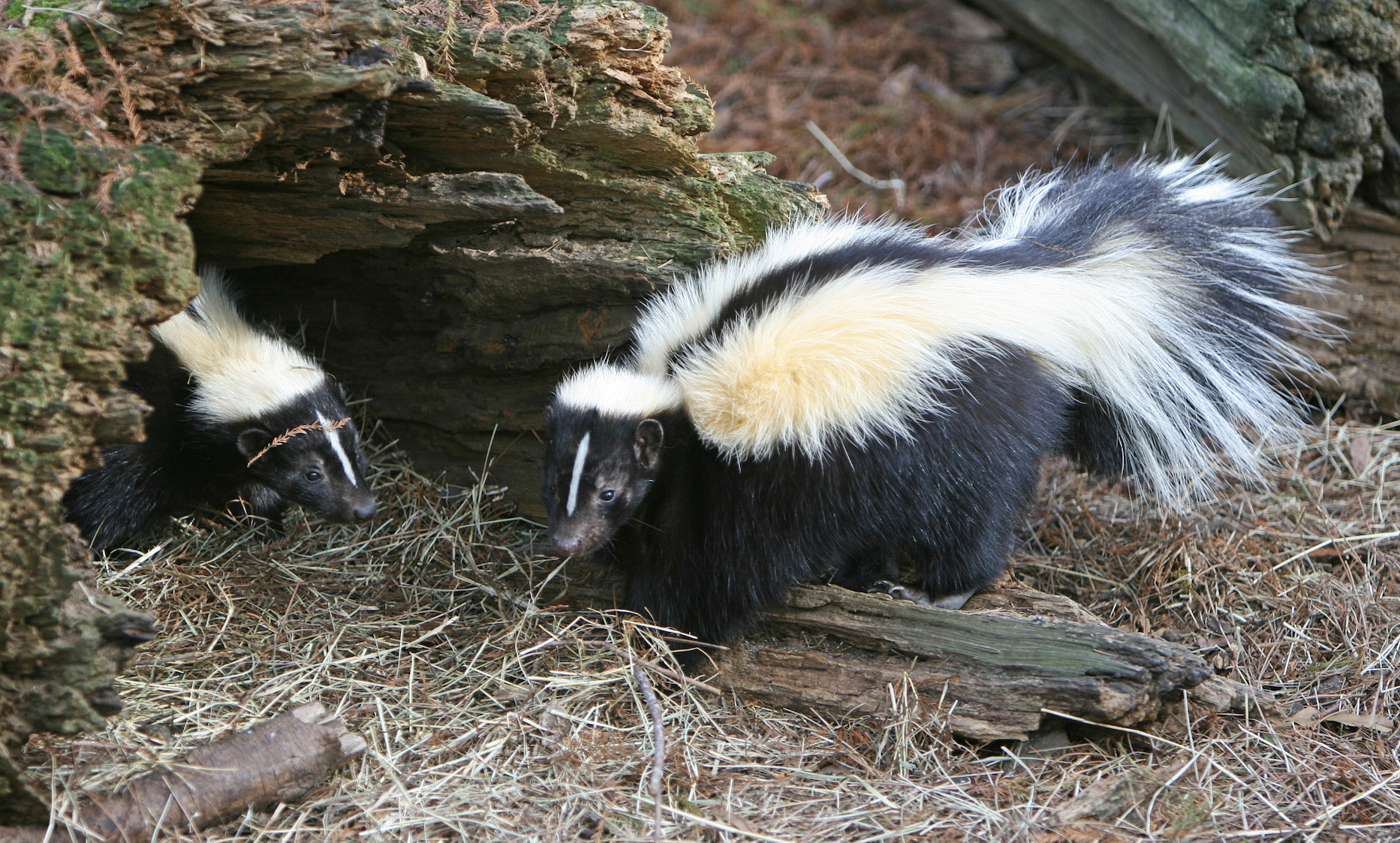 urther evidence of this by explaining how the first time she encountered the smell of skunk spray, she was having a beautiful summer day with her mother when her mother exclaimed, “Isn’t that smell nice!” She agreed with Mom. It didn’t matter that her later memories of skunk spray were often less positive. To this day, she still enjoys the strong scent. In other words, scents smell differently to everyone and this is largely because our first memory of scents are all experienced differently. Man, how I would love to be able to re-experience my first skunk spray encounter!
urther evidence of this by explaining how the first time she encountered the smell of skunk spray, she was having a beautiful summer day with her mother when her mother exclaimed, “Isn’t that smell nice!” She agreed with Mom. It didn’t matter that her later memories of skunk spray were often less positive. To this day, she still enjoys the strong scent. In other words, scents smell differently to everyone and this is largely because our first memory of scents are all experienced differently. Man, how I would love to be able to re-experience my first skunk spray encounter!
But enough about brain psychology. Even in the animal kingdom, most critters find skunks repulsive. Very few animals prey upon skunks, however by now you have probably guessed that there are animals who don’t gag at the scent of a skunk. Among these animals that find skunks enticing are Great-horned Owls and other large birds of prey that are seemingly unbothered by the skunk’s defensive spray. (This well-done video explains the science behind skunk spray.)
Despite being in the weasel family (Mustilidae), the Striped Skunk (Mephitis mephitis) is no wolverine. The skunk is a docile and somewhat timid mustelid whose only real defense is secreting an oily, strongly scented musk. This musk not only smells foul, but can cause vomiting, burning in the eyes, and even 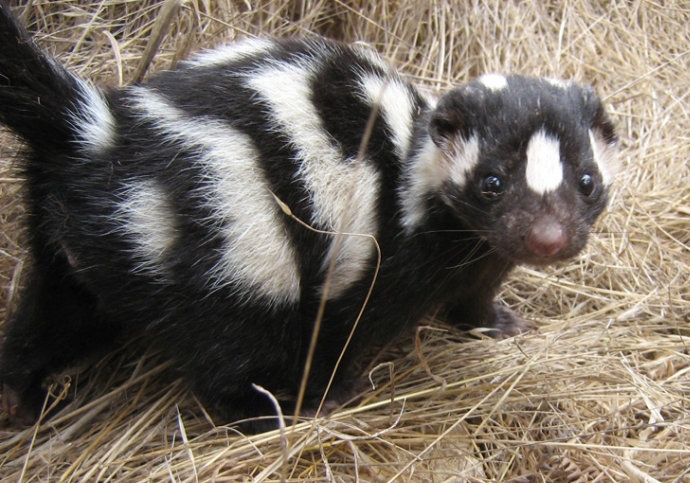 temporary blindness if aimed directly into eyes. A skunk is so reluctant to use her best defense that she (and he) performs an antagonistic warning behavior first. This shuffle and stomp “krump” is followed by vertical tail lifting. And, if stomping and tail lifting fails to get the point across, the skunk will curl into a u-shape and emit a powerful spray of musk. Click here to watch two adorable orphaned skunk babies practice their stomping routine!
temporary blindness if aimed directly into eyes. A skunk is so reluctant to use her best defense that she (and he) performs an antagonistic warning behavior first. This shuffle and stomp “krump” is followed by vertical tail lifting. And, if stomping and tail lifting fails to get the point across, the skunk will curl into a u-shape and emit a powerful spray of musk. Click here to watch two adorable orphaned skunk babies practice their stomping routine!
Perhaps one of the most recognizable animals in the world, the striped skunk has a black body with a long bushy tail. Two long, lateral stripes extend from the base of her pointy head to the tip of her tail. Stumpy legs and small rounded ears help to give her a more typical mustelid appearance.
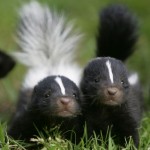 A native Wisconsinite, the Striped Skunk is found throughout the state and throughout the U.S. on into parts of Canada and Mexico. She is the predominant skunk of Wisconsin residing in a variety of habitats from forests to city neighborhoods. Her cousin, the Spotted Skunk (right), is very rare throughout the Great Lakes Basin. Though once common throughout the state, the Spotted Skunk is now so rare that most mammalogists believe it to be extirpated from Wisconsin.
A native Wisconsinite, the Striped Skunk is found throughout the state and throughout the U.S. on into parts of Canada and Mexico. She is the predominant skunk of Wisconsin residing in a variety of habitats from forests to city neighborhoods. Her cousin, the Spotted Skunk (right), is very rare throughout the Great Lakes Basin. Though once common throughout the state, the Spotted Skunk is now so rare that most mammalogists believe it to be extirpated from Wisconsin.
The Striped Skunk’s amazing adaptability allows her to take up residence wherever she finds fit; abandoned woodchuck burrows, brush piles, rock crevices and even under house patios. The house cat-sized Striped Skunk is an opportunist who varies its diet with the seasons. She’s crepuscular by nature, foraging between sunset and sunrise. Primarily insectivorous during some seasons, she adds fruit and berries during others. During times when proteins are readily available, she even favors small mammals, crustaceans, birds and eggs.
Winters are brutal on skunks. The Striped Skunk copes with winter by venturing outside of her den as little as possible and conserves heat by huddling together with other skunks. It is thought that up to 15 skunks will huddle together in a winter lair and that female skunks rely on communal huddling more than males. She does not hibernate, but rather lowers her body temperature dramatically. A skunk in winter forages only during particularly mild times. She may lose up to 50% of her body mass in winter, making her particularly susceptible to starvation.
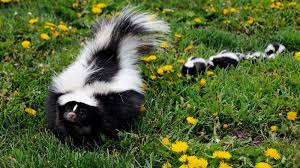 Skunks breed in early spring and give birth (often after delayed implantation) roughly two months later. The mother births four to six partially furred kits in an underground nest. Kits open their eyes at three weeks of age and start weaning around six weeks. Kits will venture out on foraging expeditions around that time—sweetly filing single-file behind mom (above) as she leads the troupes. Young males will leave their mothers in late-summer, while young females will often stay until the following spring. Female and male skunks both become sexually mature a little before a year of age.
Skunks breed in early spring and give birth (often after delayed implantation) roughly two months later. The mother births four to six partially furred kits in an underground nest. Kits open their eyes at three weeks of age and start weaning around six weeks. Kits will venture out on foraging expeditions around that time—sweetly filing single-file behind mom (above) as she leads the troupes. Young males will leave their mothers in late-summer, while young females will often stay until the following spring. Female and male skunks both become sexually mature a little before a year of age.
Fun Facts:
 A brief flicker of light… Most skunks in the wild only live about a year, but can live up to seven years. The longest living documented captive skunk lived to be about 10 years old.
A brief flicker of light… Most skunks in the wild only live about a year, but can live up to seven years. The longest living documented captive skunk lived to be about 10 years old.
Watch out! She has deadly accurate aim. A skunk’s musk can be sprayed quite precisely at a predator from up to 10 feet away. However, the most dangerous part is that she can fire 5-6 times in a row!
What is in a name? Apparently a lot of stink. The Latin name for skunk, “mephitis”, means “bad odor.”
Glasses for all skunks in 2016!! A skunk has poor vision. This fact combined with her dark coloring and dusk activity means that she regularly becomes the victim of automobile collisions.
“Don’t judge me. It’s my nature!” A male skunk provides no parental care to his young. He is polgynous and mates (and moves on) with many females during breeding season.
And you thought ticks were bad! Many skunks are parasitized by a nematode that burrows into the frontal sinus cavity bone of the skull, creating pressure on the brain and often death:(
* This article was written using the books "Mammals of the Great Lakes Region" by Alan Kurta and "Mammals of Wisconsin" by Stan Tekiela, and the website wikipedia.org and youtube.com.


